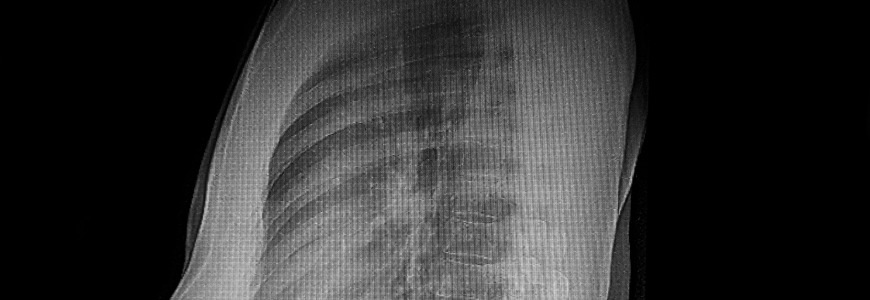Duke Children’s recently launched a dedicated Pectus Clinic under the leadership of pediatric surgeon Tamara Fitzgerald, MD, PhD, FACS. Fitzgerald has unique expertise in treating patients with pectus malformations, including pectus excavatum and pectus carinatum. “We have many patients traveling to us for treatment of these conditions,” says Fitzgerald.
Both pectus excavatum and pectus carinatum are dynamic and usually become more pronounced during adolescence. “The conditions can be stigmatizing for young people, who are often self-conscious about their appearance,” says Fitzgerald.
While most pectus deformities don’t cause serious complications, cosmetic implications are valid reasons to consider surgical intervention. “A lot of patients are very worried because they think that they will have heart or breathing problems, but that’s usually not the case,” says Fitzgerald.
Leading-edge surgical techniques
Fitzgerald frequently corrects pectus excavatum, the most common anterior chest wall deformity.
“Pectus excavatum affects both males and females, but during adolescence young males are in activities or situations where they are bare-chested around peers. It can become a serious body image issue. That’s typically when families come to see me,” says Fitzgerald. “The good news is we can treat most cases with exceptional results.”
Fitzgerald most often performs the Nuss procedure to correct the inward displacement of the sternum. Nuss is preferred over the earlier Ravitch procedure because it leads to less scarring and morbidity. “Nuss is the current standard of care. I make two small incisions and place a retrosternal bar. When I flip the bar, it pushes the sternum out into position. The bar stays in place for three years. Then, it's surgically removed,” says Fitzgerald.
Fitzgerald also is performing a new cryoablation procedure during surgery. A cold probe is applied to the nerves along the rib to numb the chest to help reduce patients’ pain up to six weeks post-surgery.
Pectus carinatum is usually treated with bracing. “For most patients, we try bracing first. At Duke’s Lenox Baker Children’s Hospital, there’s an orthotist in the same building as our clinic, so it’s convenient for patients to get fitted and see us with coordinated appointments,” says Fitzgerald.
To refer a patient for an evaluation at the Duke Children’s Pectus Clinic, call 919-681-5077.
Achieving optimal outcomes
To achieve the best results, it’s optimal to place the bar in the sternum when the bones are forming and remove it when ossification matures. “The best time to perform the procedure is between ages 13 and 16 because the ribs are more flexible, but surgery can also be performed for older individuals.”
Patients can have the surgery after age 20 with good cosmetic results, but there may be more pain and healing time associated with doing the procedure when bone tissue is more developed.
The surgical recovery time has vastly improved. Most patients are discharged home one or two days after surgery. “It takes patients about six weeks to fully heal from the surgery and up to six months to return to normal physical activities. The pain gradually improves over the first month and significantly improves from that point forward,” says Fitzgerald.
Cosmetic results are most noticeable; however, some patients report improved breathing and reduced heart palpitations after correcting pectus excavatum due to less pressure on the heart and lungs.
Multidisciplinary clinic
Fitzgerald coordinates with other pediatric specialists at Lenox Baker for complex cases that involve scoliosis or need for bracing.
“We get our patients to the highest levels of care they need in one convenient location. Patients also don’t need any imaging before scheduling their initial appointment. We will arrange for any imaging that needs to happen before surgery,” says Fitzgerald.
